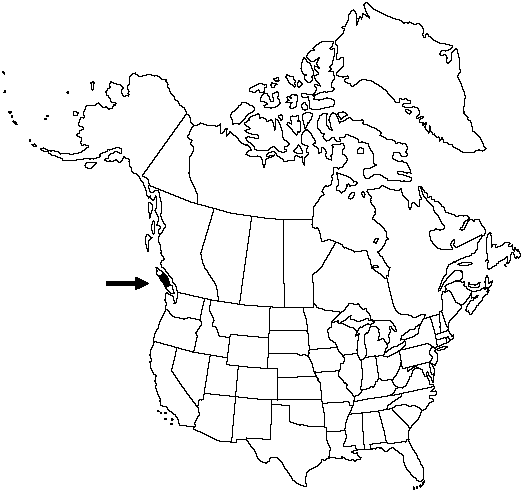FNA>Volume Importer |
FNA>Volume Importer |
| Line 17: |
Line 17: |
| | }}<!-- | | }}<!-- |
| | | | |
| − | --><span class="statement" id="st-d0_s0" data-properties="root reproduction"><b>Roots </b>not proliferous.</span> <span class="statement" id="st-d0_s1" data-properties="stem growth form or orientation;stem architecture"><b>Stems </b>short-creeping, mainly unbranched;</span> <span class="statement" id="st-d0_s2" data-properties="scale coloration;scale coloration;scale shape;scale length;scale width;border size or width;border coloration;margin architecture or shape">scales black or with narrow pale borders, narrowly lanceolate, 1.5–3 × 0.2–0.4 mm, margins entire.</span> <span class="statement" id="st-d0_s3" data-properties="leaf architecture"><b>Leaves </b>monomorphic.</span> <span class="statement" id="st-d0_s4" data-properties="petiole coloration;petiole some measurement"><b>Petiole </b>dark reddish-brown throughout, 1–4 mm;</span> <span class="statement" id="st-d0_s5" data-properties="scale coloration;scale arrangement or course or shape">indument of black linear scales at base.</span> <span class="statement" id="st-d0_s6" data-properties="blade arrangement or course or shape;blade architecture or shape;blade length;blade width;blade width;blade growth form or texture;blade pubescence"><b>Blade </b>linear, 1-pinnate, 2.5–14 × 0.5–1.2 cm, thick (open habitat) to herbaceous (shaded, moist habitat), essentially glabrous;</span> <span class="statement" id="st-d0_s7" data-properties="base shape">base somewhat tapered;</span> <span class="statement" id="st-d0_s8" data-properties="apex shape;apex architecture">apex obtuse, not rooting.</span> <span class="statement" id="st-d0_s9" data-properties="rachis coloration;rachis coloration;rachis reflectance;rachis pubescence"><b>Rachis </b>reddish-brown in proximal 1/2–4/5, green distally, lustrous, glabrous.</span> <span class="statement" id="st-d0_s10" data-properties="pinna shape;pinna shape;pinna shape;pinna shape;pinna length;pinna width;pair count"><b>Pinnae </b>in 10–30 pairs, ovate to rhombic to ovate-oblong, 2.5–11 × 2–6 mm;</span> <span class="statement" id="st-d0_s11" data-properties="base shape;base shape;base shape">base truncate to shortly acute;</span> <span class="statement" id="st-d0_s12" data-properties="margin shape;margin shape;margin shape">margins shallowly crenate (shade-forms) to essentially entire (exposed forms);</span> <span class="statement" id="st-d0_s13" data-properties="apex shape;apex shape">apex obtuse, broadly rounded.</span> <span class="statement" id="st-d0_s14" data-properties="vein fusion;vein prominence;vein prominence;vein prominence"><b>Veins </b>free, evident to obscure.</span> <span class="statement" id="st-d0_s15" data-properties="sorus count;side orientation;side orientation"><b>Sori </b>1–3 pairs per pinna on both basiscopic and acroscopic sides.</span> <span class="statement" id="st-d0_s16" data-properties=""><b>Spores </b>64 per sporangium.</span> <span class="statement" id="st-d0_s17" data-properties="spore count;2n chromosome count">2n = 144.</span><!-- | + | --><span class="statement" id="st-undefined" data-properties=""><b>Roots </b>not proliferous. <b>Stems</b> short-creeping, mainly unbranched; scales black or with narrow pale borders, narrowly lanceolate, 1.5–3 × 0.2–0.4 mm, margins entire. <b>Leaves</b> monomorphic. <b>Petiole</b> dark reddish brown throughout, 1–4 mm; indument of black linear scales at base. <b>Blade</b> linear, 1-pinnate, 2.5–14 × 0.5–1.2 cm, thick (open habitat) to herbaceous (shaded, moist habitat), essentially glabrous; base somewhat tapered; apex obtuse, not rooting. <b>Rachis</b> reddish brown in proximal 1/2–4/5, green distally, lustrous, glabrous. <b>Pinnae</b> in 10–30 pairs, ovate to rhombic to ovate-oblong, 2.5–11 × 2–6 mm; base truncate to shortly acute; margins shallowly crenate (shade forms) to essentially entire (exposed forms); apex obtuse, broadly rounded. <b>Veins</b> free, evident to obscure. <b>Sori</b> 1–3 pairs per pinna on both basiscopic and acroscopic sides. <b>Spores</b> 64 per sporangium. <b>2n</b> = 144.</span><!-- |
| | | | |
| | -->{{Treatment/Body | | -->{{Treatment/Body |
| Line 46: |
Line 46: |
| | |publication year=1865 | | |publication year=1865 |
| | |special status= | | |special status= |
| − | |source xml=https://jpend@bitbucket.org/aafc-mbb/fna-fine-grained-xml.git/src/287ef3db526bd807d435a3c7423ef2df1e951227/V2/V2_411.xml | + | |source xml=https://jpend@bitbucket.org/aafc-mbb/fna-data-curation.git/src/9216fc802291cd3df363fd52122300479582ede7/coarse_grained_fna_xml/V2/V2_411.xml |
| | |genus=Asplenium | | |genus=Asplenium |
| | |species=Asplenium adulterinum | | |species=Asplenium adulterinum |
| − | |2n chromosome count=144
| |
| − | |apex architecture=not rooting
| |
| − | |apex shape=rounded;obtuse;obtuse
| |
| − | |base shape=truncate;shortly acute
| |
| − | |blade architecture or shape=1-pinnate
| |
| − | |blade arrangement or course or shape=linear
| |
| − | |blade growth form or texture=herbaceous
| |
| − | |blade length=2.5cm;14cm
| |
| − | |blade pubescence=glabrous
| |
| − | |blade width=thick;0.5cm;1.2cm
| |
| − | |border coloration=pale
| |
| − | |border size or width=narrow
| |
| − | |leaf architecture=monomorphic
| |
| − | |margin architecture or shape=entire
| |
| − | |margin shape=shallowly crenate;essentially entire
| |
| − | |pair count=10;30
| |
| − | |petiole coloration=dark reddish-brown
| |
| − | |petiole some measurement=1mm;4mm
| |
| − | |pinna length=2.5mm;11mm
| |
| − | |pinna shape=ovate;rhombic
| |
| − | |pinna width=2mm;6mm
| |
| − | |rachis coloration=green;reddish-brown
| |
| − | |rachis pubescence=glabrous
| |
| − | |rachis reflectance=lustrous
| |
| − | |root reproduction=not proliferous
| |
| − | |scale arrangement or course or shape=linear
| |
| − | |scale coloration=black;with narrow pale borders;black
| |
| − | |scale length=1.5mm;3mm
| |
| − | |scale shape=lanceolate
| |
| − | |scale width=0.2mm;0.4mm
| |
| − | |side orientation=acroscopic;basiscopic
| |
| − | |sorus count=1;3
| |
| − | |spore count=64
| |
| − | |stem architecture=unbranched
| |
| − | |stem growth form or orientation=short-creeping
| |
| − | |vein fusion=free
| |
| − | |vein prominence=evident;obscure
| |
| | }}<!-- | | }}<!-- |
| | | | |
| | -->[[Category:Treatment]][[Category:Asplenium]] | | -->[[Category:Treatment]][[Category:Asplenium]] |
Roots not proliferous. Stems short-creeping, mainly unbranched; scales black or with narrow pale borders, narrowly lanceolate, 1.5–3 × 0.2–0.4 mm, margins entire. Leaves monomorphic. Petiole dark reddish brown throughout, 1–4 mm; indument of black linear scales at base. Blade linear, 1-pinnate, 2.5–14 × 0.5–1.2 cm, thick (open habitat) to herbaceous (shaded, moist habitat), essentially glabrous; base somewhat tapered; apex obtuse, not rooting. Rachis reddish brown in proximal 1/2–4/5, green distally, lustrous, glabrous. Pinnae in 10–30 pairs, ovate to rhombic to ovate-oblong, 2.5–11 × 2–6 mm; base truncate to shortly acute; margins shallowly crenate (shade forms) to essentially entire (exposed forms); apex obtuse, broadly rounded. Veins free, evident to obscure. Sori 1–3 pairs per pinna on both basiscopic and acroscopic sides. Spores 64 per sporangium. 2n = 144.
Habitat: Crevices in limestone
Elevation: 1250 m
Distribution
B.C., Europe.
Discussion
In North America Asplenium adulterinum is known to occur on Vancouver Island, British Columbia, where only the fertile allotetraploids are known. It is likely to occur in areas where the two parents, A. trichomanes and A. trichomanes-ramosum, grow together. The genetics of the American plants should be compared with that of the European, among which two nothosubspecies occur (F. Mokry et al. 1986).
Selected References
None.
